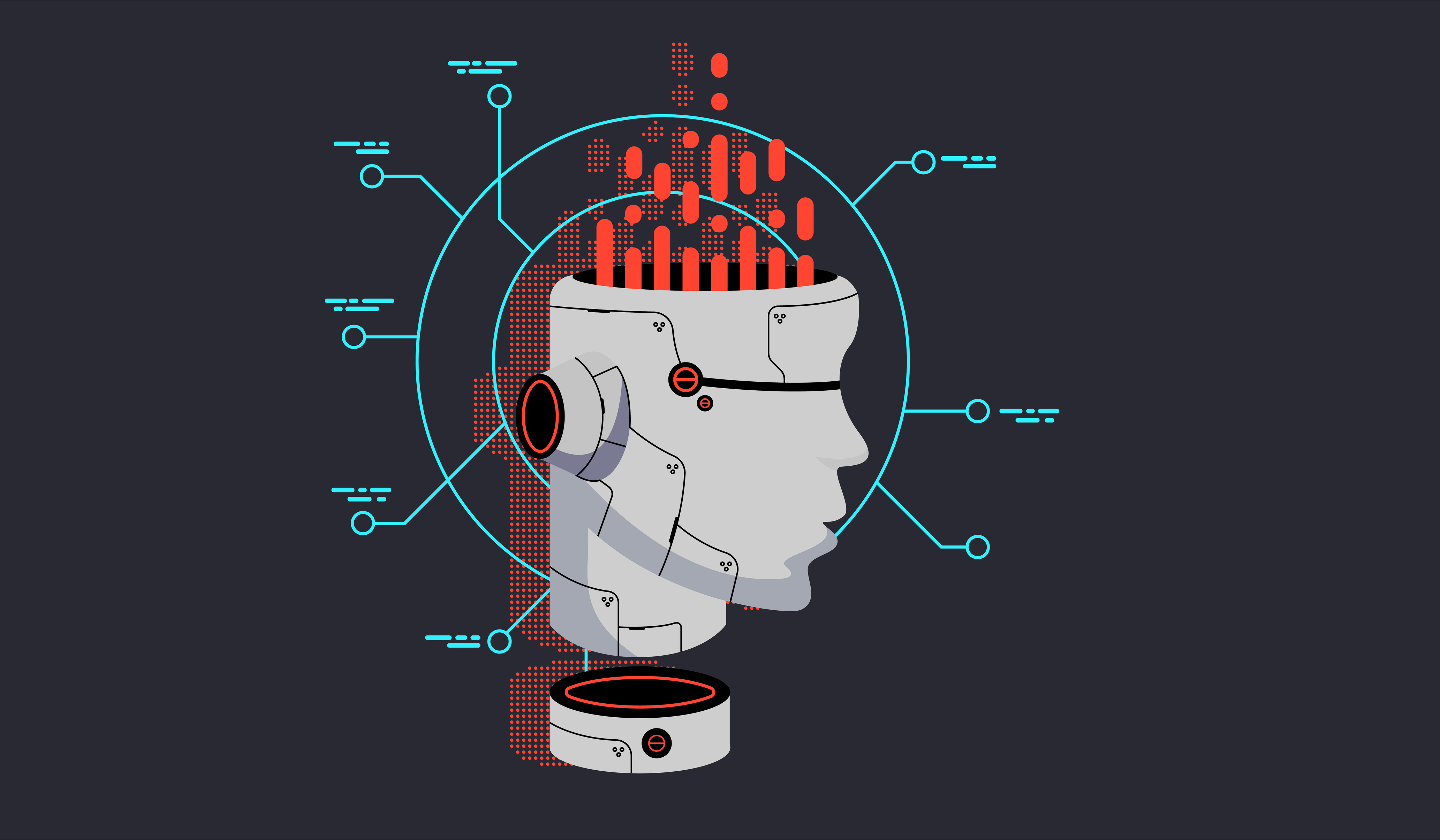
Diving into a topic like artificial intelligence without previous knowledge seemed like an attempt to scale the world’s largest mountain with no safety equipment.
As someone who is admittedly non-tech-savvy, I never thought I’d be able to navigate AI with any authority. But after a few months of high-level research about AI and related tech content, I’ve discovered that artificial intelligence is easier to understand than it first seemed.
If you’re anything like me and hail from a non-science background, you probably haven’t thought much about researching AI content on your own. But if you’re reading this, you might have since come across something that sparked your interest in artificial intelligence (despite your lack of a hard science degree or tech education).
You might be wondering how to start learning AI from scratch. Here are a few things you can do to get started:
So, if you want to know more about AI and how you can become well-versed in the topic, read on to see six takeaways I’ve had as I’ve learned how to master writing about artificial intelligence.
Coming in with no previous knowledge, the only thing I knew about AI was that it had something to do with automation and technology, and that everyone associates artificial intelligence with robotics (which is only one of many, many other elements). Although robotic process automation (RPA) overlaps with AI, they are not synonymous. Neither is machine learning, or any other similar, but not same terminology that fall under the umbrella term of AI.
Learning the nuances between subsets of artificial intelligence isn’t easy, but it is possible. Let's discuss the six key takeaways I’ve discovered while growing my expertise on AI and all it has to offer.
This might not be news to you, but it was to me. Artificial intelligence is a subset of computer science. And within AI, there are multiple other sub-areas of the field that branch off into smaller, even more complex components.
If you’ve heard phrases like big data, data mining, and structured vs. unstructured data but have NO idea how to tell them apart, you’re not alone. There are so many components of AI and terms within the topic that I was able to curate a comprehensive glossary of artificial intelligence terms all about them. Check it out to learn the differences between easily-confused words and finally sound like you know what you’re talking about.
Before you attribute the wonders of artificial intelligence to the modern era, it’s important to know that the roots of AI began before the 1900s.
Learning about the history of artificial intelligence is a challenge in and of itself. From the days of fantasy books and sci-fi films about robotic automation in the early 1900s to the reality of computer scientist Alan Turing creating the Turing Test in 1950, each decade of AI innovations is explored in depth in the above guide.
Image courtesy of Becominghuman.ai
Although AI seems like a modern-day innovation, it has humble beginnings like any scientific advancement.
This is another one of those instances where we interact with AI-powered technology but have no idea we’re doing it. Every time you engage Siri on your iPhone or say “Hey Google!” to your Google Home voice assistant, you’re using artificial intelligence.
Having the ability to type search queries into your internet browser was an innovation 10 years ago. Today, the ability to speak to your phone or another voice-activated device and have it respond to you in a timely and accurate fashion is the hot trend that keeps growing.
People love being able to speak to a device and have it provide assistance; this eliminates the need for typed queries that are worded in such a manner your computer can understand what you’re asking. Now, people can speak to voice assistants with their natural speech patterns, vocal inflections, and slang – and still be understood. These voice assistants are equipped with natural language processing (NLP) abilities that make them capable of understanding human language and speech patterns while emitting logical responses that make sense to human users.
I assumed that if a company claimed to use artificial intelligence that it must mean it was a tech-based company. But that’s not the case. In fact, every industry you could possibly think of uses artificial intelligence to some degree.
For instance, in healthcare, AI is being used to help with keeping track of patients’ health records, actualizing digital health consultations for people who cannot or do not want to go to an in-office doctor appointment, and providing access to care for underdeveloped nations by means of telehealth alternatives. These innovations amplify the reach of healthcare professionals on a local and global scale by providing care to all via the use of artificial intelligence.
In education, AI is being used to help shape the growth of edtech, or educational technology. Artificial intelligence gives students who need extra help inside and outside of the classroom an opportunity to advance their learning with technological innovations. Robot tutors help children who have difficulty asking questions to their teachers or communicating with their peers by providing a friendly, unintimidating character with which they can speak and learn from. AI also helps instructors streamline parent-teacher meetings and automate things like grading, which deals with large amounts of student data.
Lastly, which might interest you the most – AI is being used for amplifying companies’ marketing strategies. Extending the reach of marketing content, targeting outreach to the right audience, discovering trends based on demographic data, and assisting with customer inquiries are all ways artificial intelligence is helping marketers get ahead of the curve.
Plus, small businesses are using AI for a multitude of reasons, starting with automating laborious tasks (like creating email lists and employee scheduling) that eat up so much of employees’ time.
Chatbots are a use case of AI that you probably encounter every time you open a browser window and visit a webpage. Basically whenever you see a chat box pop-up on the side of a browser window, that’s not actually a person trying to chat with you – it’s a chatbot!
Image courtesy of My Kitsch via Facebook
Companies use chatbots to keep an active customer service presence online even outside of working hours. Sometimes chatbots are used as the main point-of-contact, while other times they’re used as a lead-in or guide to direct users to a human customer representative. You can even find chatbots on Facebook!
Facebook chatbots are probably the most commonly used chatbot type that companies employ. Why? Well, creating a chatbot from scratch is a lot more difficult than using a step-by-step guide on creating one that is hosted by Facebook.
Still, since chatbots are the way of the world today and in the future, if you don’t already know how to build a chatbot on your own, maybe reading up on chatbot software can help you get started. Plus, what better way is there to become immersed in artificial intelligence than developing a chatbot for your website?
Contrary to popular belief, there are more benefits than there are risks to adding artificial intelligence in the workplace. Some jobs, especially those with tasks that are repetitive and monotonous, will benefit greatly from artificial intelligence.
Data acquisition and analysis, for instance, is a monotonous, time-consuming task that has historically been done by a data analyst. With so much user data in the world, the task of acquiring, sorting, and analyzing large datasets leaves room for high levels of user error. With sensitive user information at hand, there’s little room for mistakes.
To ensure minimal error, machine learning (ML) algorithms are being used to identify patterns and make informed decisions and assumptions about data trends. This task in particular is better suited for AI automation given the necessity of high-level attention-to-detail that ML algorithms have over human data analysts.
Still, some jobs within the trucking industry might be at risk for automation. With an industry that’s suffering from a shortage of capable or interested drivers, AI can step in to save the day. San Diego-based startup TuSimple is piloting AI-automated, driverless trucks to help make this into a reality. Even with advancements in AI, something like this will continue undergoing tests and won’t affect anyone for some time.
If you’ve made it this far and still yearn to know more about AI, you’re in luck. Artificial intelligence is a field experiencing continuous and rapid growth. With all of the above innovations happening thus far, imagine what we can expect in 2020 and beyond.
Rebecca Reynoso is the former Sr. Editor and Guest Post Program Manager at G2. She holds two degrees in English, a BA from the University of Illinois-Chicago and an MA from DePaul University. Prior to working in tech, Rebecca taught English composition at a few colleges and universities in Chicago. Outside of G2, Rebecca freelance edits sales blogs and writes tech content. She has been editing professionally since 2013 and is a member of the American Copy Editors Society (ACES).
You can think of supervised learning as a teacher supervising the entire learning process.It's...
 by Amal Joby
by Amal Joby
Unsupervised learning lets machines learn on their own.
 by Amal Joby
by Amal Joby
If you use a smartphone, you probably have come across narrow AI.
 by Amal Joby
by Amal Joby
You can think of supervised learning as a teacher supervising the entire learning process.It's...
 by Amal Joby
by Amal Joby
Unsupervised learning lets machines learn on their own.
 by Amal Joby
by Amal Joby


